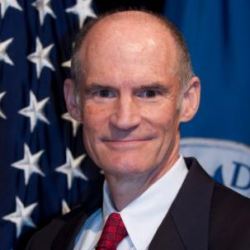
The Internet is inherently insecure and every day Americans’ privacy and the country’s national and economic interests come under attack.
So says Bruce McConnell, senior counselor for cybersecurity at the U.S. Department of Homeland Security (DHS) and co-author of a recent white paper, "Enabling Distributed Security in Cyberspace," that suggests we ought to involve computers in protecting themselves against these malicious onslaughts.
"We are proposing building a healthy and resilient cyber ecosystem in which cyberparticipants are able to work together in near-real time to prevent cyberattacks, limit the spread of attacks across participating devices, minimize the consequences of attacks, and recover to a trusted state," says McConnell. "In the paper, we use the analogy of the human immune system which has the ability to defend itself from things that are against its survival interests."
Because the cyberattacks come at machine speed and tend to morph and evolve very rapidly, McConnell says it makes logical sense to have computers involved in their own protection "since we can no longer rely on what we do now, which is to use manual processes to communicate to each other about threats we perceive and then to deploy manual patches and countermeasures."
McConnell says he is fully aware of the parallels some might draw between his proposal and the events depicted in the popular Terminator movies in which a so-called Skynet computer system "becomes self-aware" and defends itself against its creators.
"I absolutely understand the concern," he says, "and we have to keep that in mind, building stop-loss barriers into the architecture to limit the danger of a spread of machines gone wild."
James Lewis, director of the technology and public policy program at the Washington, DC-based Center for Strategic and International Studies, likes what he sees in the DHS white paper, describing today’s cyber threats as "the most serious intelligence problem the U.S. has faced since the loss of the atomic bomb plans in the late 1940s.
"This is what we have to do," says Lewis, who believes people should not let fear of new technologies stand in the way of a good long-term strategy. "They used to have human elevator operators too, and we’ve all gotten accustomed to the idea that elevators would work just fine when we push a button instead. This is the same thing albeit on a much grander scale. We invented these wonderful machines to perform functions that would allow humans to do other things; this is a step in the right direction."
DHS is writing a more detailed strategy that McConnell hopes to release in the form of a Wiki before the end of June. But, he says, in the meantime, he urges the cyber community to read "Enabling Distributed Security in Cyberspace" and send him feedback at cyberfeedback@dhs.gov. "We’d like to be active participants in this project," he says, "but we certainly don’t want to own it."
Paul Hyman was editor-in-chief of several technology publications at CMP Media, including Electronic Buyers’ News.



Join the Discussion (0)
Become a Member or Sign In to Post a Comment